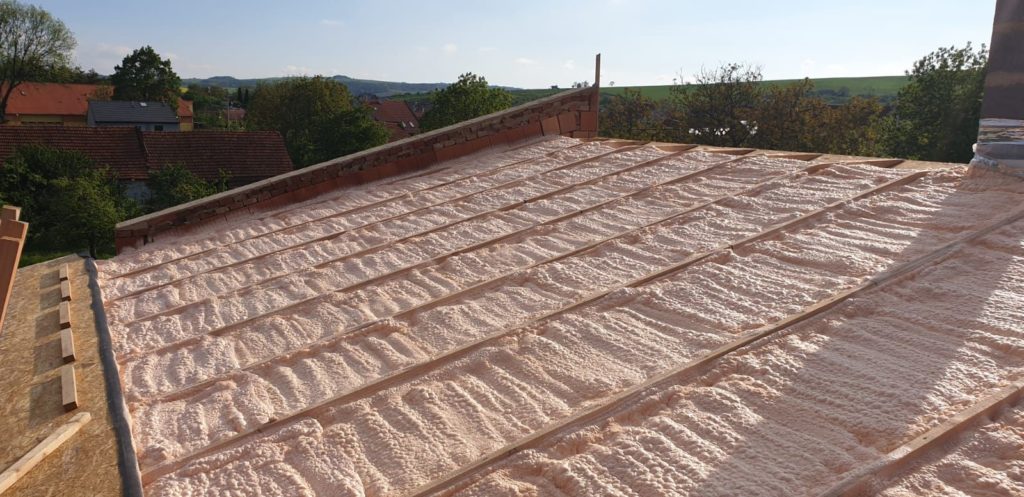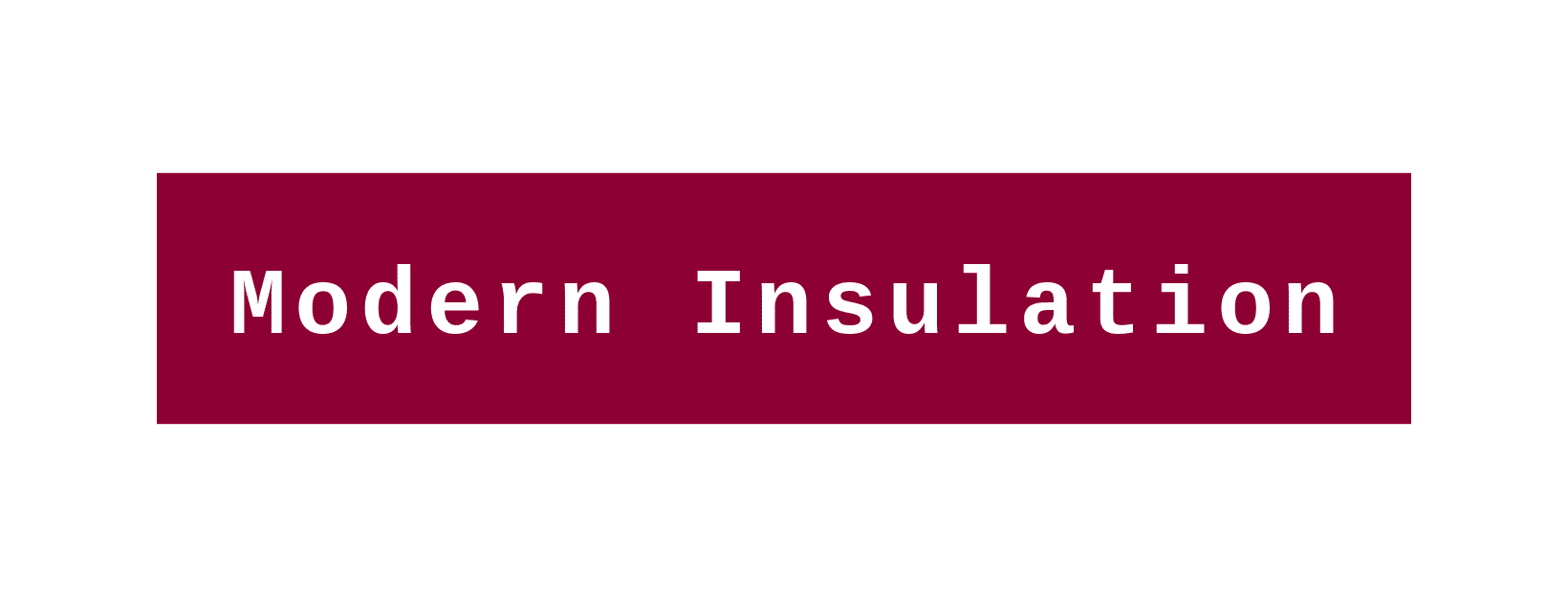Roof Spray Foam Insulation
Floor Spray Foam Specialists Ireland
Spray foam insulation is a liquid foam which is sprayed into position and sets into an insulating layer. It can be used to insulate your roof, loft, walls, floors and more. It has been in use for more than 30 years and is now becoming increasingly popular as it’s an effective insulator and can also stop air leakage. If spray foam insulation is right for your home and budget, the type you choose will depend on what you want it to do. Keep reading to find out more about the different types.
Open & Closed Cell
Both open cell and closed cell spray foam insulation are usually made from polyurethane and filled with bubbles of gas or air, but have different properties when they set. We explain why you might choose one or the other. Closed cell spray foam sets into a rigid solid, which can help support the structure of your property if it’s not in the best condition. That said, spray foam should never be applied as a quick fix where structural repairs are required. Closed cell spray foam tends to be a better insulator than open cell spray foam. This is because when it sets, it contains lots of separate pockets of gas which slow down the movement of heat through it.
Open cell spray isn’t as good an insulator as close cell foam. It’s less dense once set – you can compress it with your hand. So you’ll need to install a thicker layer to get the same level of insulation. Open cell spray foam is often used as sound insulation as it blocks and reduces airflow. It allows moisture through it so there’s less worry of condensation building up.

Under Roof Tiles
One reason people don’t insulate their lofts is so they can store things in them. The required 270mm thickness of loft insulation is often higher than the joists, so you can’t lay boards on top. However, spray foam insulation doesn’t need to be as thick. 100mm of spray foam insulation is equivalent to around 170mm of mineral wool loft insulation, according to the National Insulation Association. This may allow you insulate your loft and use it for storage, too.
Pitched Roof
But keep in mind that your roof needs to be in a generally good condition and not leaking. Otherwise spray foam insulation could cause new problems – see our advice on ‘Is spray foam insulation safe?’ below. Spray foam is also worth considering if you have hard-to-treat cavity walls or solid walls that aren’t suitable for external insulation due to planning restrictions.
Some types of foam insulation are waterproof but also breathable, making it suitable for homes in flood-prone areas. Every home is different and, since it’s hard to remove spray foam once it has been installed, we’d advise getting specialist advice from an expert before proceeding. An installer should always carry out a survey before beginning the job to ensure the product is suitable for your home. Spray foam insulation is more expensive than other types of insulation, such as mineral or glass-wool, polystyrene slabs or expanded polystyrene (EPS).

Spray Foam Insulation For Your Attic
Depending on the size of your property, for example, you should expect to pay between £600 and £1,100 for professionally installed loft insulation using traditional materials, such as mineral fibre. And you could save even more if you installed it yourself. The total cost will depend on the thickness, type (closed or open cell) and size of the area you want to insulate, as well as how it’s installed. Since spray foam’s higher cost means it will take much longer to pay back from the savings on your energy bills, compared to cheaper insulation.
Reduce Heat Loss
As a result of concerns over condensation, spray foam insulation can end up causing problems when you’re buying or selling a property. The installation must also conform with the manufacturer requirements, building regulations, and health and safety rules. Your installer should also provide you with the following. Spray foam insulation is often found in roof spaces either at the joist or at rafter level. This type of insulation helps to reduce heat loss and keep warm air contained within the home during colder months. It also helps to prevent a property from becoming too warm in the summer months.
Let’s start off with the good. Many spray foam insulation specialists will tell you that this material helps to keep roof tiles and slates in place, therefore strengthening your roof as a whole. This increases insulation in a roof set-up and will also protect water tanks and pipes from freezing. When installing spray foam roof insulation material, you’re creating a dry, clean and useful attic space for you and your family to exploit. The method is also extremely quick and easy for a professional team of insulation specialists to install.

Spray Foam Insulation Cost per sq metre Ireland
If spray foam is applied to the underside of your roof slates, you are effectively removing this ventilation gap. Trapping moisture inside, foam completely encapsulates your roofing battens and the top of your rafters. Spray foam insulation should be installed by an experienced professional. Spray foam can sometimes emit hazardous fumes so it is important that a competent person handles this operation! It is incredibly important that you leave a ventilated gap between your roof tiles and any insulation used. This is to allow moisture an escape route from your roof, before it begins to settle and rot away your wooden roof rafters. A completely new roof is a lot more expensive than some new insulation!
Ventilation Gap
This problem is completely avoidable with the right installation methods and competent technique. If you’d like some more information on the importance ventilation or how to work around it, contact our team today. Ideally – no! Spray foam insulation should be installed by an experienced professional. Spray foam can sometimes emit hazardous fumes so it is important that a competent person handles this operation.
Warmer Home
When sprayed at rafter level, it seals the home creating an air-tight warm roof and loft structure which contributes to keeping your home warm in winter, cool in summer whilst lowering heating and cooling costs and thereby saving on energy costs up to 50%, which can’t be achieved with traditional insulation! The majority of older properties will not have any felt or membrane underneath the roof tiles. If you have no roof felt in your home, no worries. We will staple in a foam membrane and spray the spray foam insulation directly onto the membrane to prevent and reduce the foam from sticking to the tiles, which is displayed in the pictures below. This is done to prevent you from damaging your home insulation if you want to replace your tiles in the future.
Spray foam insulation can be applied to both breathable and non-breathable roof membranes and felts. It fills every crack and crevice to eliminate air leakage or infiltration. It’s a fantastic solution that more and more people are choosing in Ireland. As you can see, there are many different factors that can affect the price of your home loft insulation. Find local Insulation Installers across Ireland and talk to them about the best type of loft insulation for your home and get a quote today.

Call For A Free Quote on Roof Spray Foam Insulation
How To Contact Us For A Quote & Site Survey
Steps To Follow
- Fill in the Form
- We will call and give you a guide price quote (and schedule a survey)
- We will provide a detailed attic insulation quote, the very same day as the survey
- Then let us know when you want us to start
